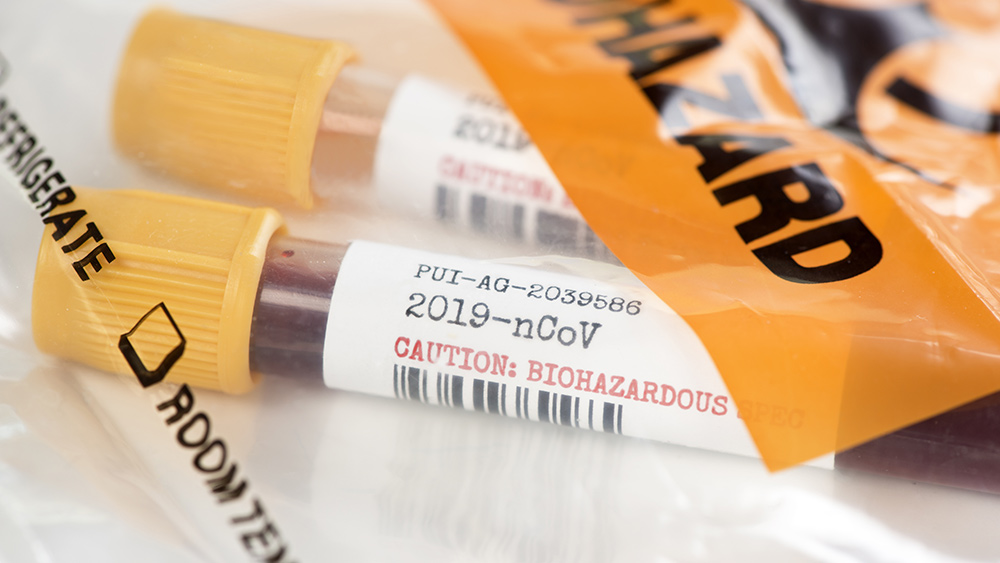New report reveals COVID-19 can even be transferred through the fecal-oral route
02/28/2020 / By Evangelyn Rodriguez

The new coronavirus (SARS-CoV-2) that originated in Wuhan, China has now infected more than 70,000 people worldwide. While the earliest reports suggested that the virus’ mode of transmission was from animals to humans, human-to-human transmission has now been confirmed by official reports.
According to the World Health Organization, previous outbreaks due to other coronavirus strains also involved human-to-human transmission. This occurred either through respiratory droplets, physical contact with infected individuals and formites (infected objects). However, a new report suggests that there’s another way COVID-19 can spread: via infected feces.
“This virus has many routes of transmission, which can partially explain its strong transmission and fast transmission speed,” wrote the China Center for Disease Control and Prevention (China CDC) in a report published online last February 15.
Coronavirus strain isolated from a stool specimen
Recently, the China CDC reported the isolation of a 2019-nCoV strain from a stool specimen submitted by a COVID-19 (the disease caused by SARS-CoV-2) patient. This was done in the Biosafety Level 3 (BSL-3) Laboratory of the National Institute for Viral Disease Control and Prevention in China.
The COVID-19 patient experienced the onset of severe pneumonia on January 16, and the stool sample was taken 15 days after the onset. After isolating the virus, the researchers used Vero cells — considered the most suitable system for primary isolation and cultivation of viruses — to culture the strain and grow virus stocks for sequence analysis. The full-length genomic sequence of the isolated strain showed a 99.98 percent similarity to that of the first isolated novel coronavirus (2019-nCoV) from Wuhan. The report further stated that the viral particles in the Vero cells had a similar morphology to coronaviruses.
These findings confirm that the stools of COVID-19 patients contain live viruses, which opens the possibility of disease transmission via the fecal-oral route. The China CDC warns that infected stool samples can contaminate hands, food, water and other commonly handled objects, and that contact with any of these, once contaminated, can lead to infection. (Related: Shocking new study says coronavirus infections double every 2.4 days.)
More evidence of the presence of coronavirus in biological samples from infected patients
On February 17, just two days after the China CDC released its report, a study involving patients in a local hospital in Wuhan was published in the journal Emerging Microbes and Infections. In it, researchers reported the presence of the 2019-nCoV in the blood samples, anal swabs and oral swabs of COVID-19 patients. They also found that in the later stages of infection, the virus is more likely to be detected in the patients’ stools than in their saliva, as evidenced by the greater number of anal swab positives versus oral swab positives. These results suggest that COVID-19 patients may harbor the virus in their intestines and can potentially shed the virus through respiratory droplets, body fluids or fecal matter.
How to avoid infection via infected feces
In 2003, fecal transmission of SARS, a virus that belongs to the same family as the 2019-nCoV, caused hundreds in Hong Kong to get sick. Air from contaminated bathrooms spread the infection not just in neighboring apartment units, but also in adjacent buildings. This shows that the fecal transmission route is highly transmissible.
To avoid infection due to fecal spread, the China CDC recommends frequent hand washing with soap and water, and disinfecting the surfaces of objects in households, toilets, public places and public transport vehicles. The agency also urges people to maintain personal hygiene, avoid eating raw food and to boil water before drinking.
In heavily affected areas, the China CDC suggests implementing separate meal systems and advises hospitals to constantly disinfect not just the environment of patients, but also their wastes, to prevent fecal contamination of food and water.
Sources include:
Tagged Under: breakthrough, China, contamination, coronavirus, covid-19, discoveries, fecal spread, fecal-oral transmission, feces, infections, infectious diseases, outbreak, pandemic, prevention, research, SARS-CoV-2, superbugs, Wuhan
RECENT NEWS & ARTICLES
COPYRIGHT © 2017 SCIENTIFIC NEWS



















